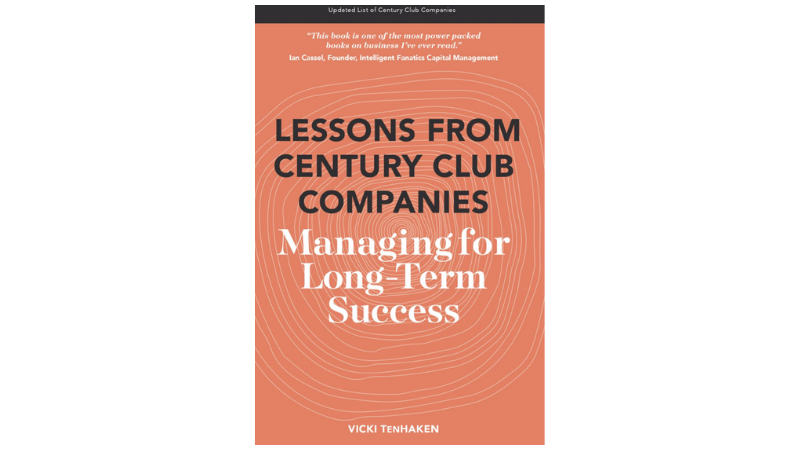
Book Note #1
Equity Intelligence 1st October 2023
Vicki TenHaken drawing upon her extensive experience spanning over decades as a corporate professional, has delved into rigorous research on companies that have demonstrated resilience and endurance over extended periods. The book serves as an enlightening read for long term investors, providing a structural framework to evaluate the endurance quotient of companies. Wealth pivots on dual axles of survival and growth. Prolonged survival is integral to growth, thereby key to wealth creation. Also compounding by its very nature becomes potent over longer periods and hence the desire to look for enduring businesses. In this light, we recommend the book to understand the foundation of lasting business.
Here are a few highlights:
- Several of the oldest known continuously operating companies in the world are Japanese. Seven were founded prior to the year 1,000. The size of companies in the database of Japanese firms over 100 years old clearly proves that firms do not have to grow large to survive. In fact, most “shinise” are small to medium-sized, private (often family-owned) businesses. Even in a country as young as the United States, over 1,000 companies have survived for more than 100 years. They have become what I like to call “Century Club” companies.
-
As business guru Peter Drucker has said, businesses exist for much more than to produce profits for shareholders, just as humans exist for more than our work. We all want to survive and thrive, and working at a job is a means to that end. Similarly, profits are the means for companies to survive and thrive.
-
…that companies die prematurely because managers focus exclusively on economic activity, forgetting that an organization is a community of humans.
-
“In a very real sense, survival is the ultimate performance measure.”
-
The leaders of the case study Century Club companies were adamant that all these factors must be implemented together to sustain a firm for the long run: together they form a mutually reinforcing web of sustainable business practices.

-
Factor 1: Strong corporate mission and culture
-
- The existence and deliberate preservation of certain values and beliefs that form a strong corporate culture form a key survival factor among Century Club companies.
-
-
Present leaders of Century Club companies see themselves as stewards or custodians of the business and feel an obligation to manage the firm in a way that both honors the past and ensures its survival into the future. This deliberate focus on continuity, rather than making a name for themselves, results in real differences in the way old companies are managed.
-
Century Club companies pay great attention to the representation and protection of their company or brand name… Name and reputation mean everything to these companies and they guard them carefully.
-
-
Factor 2: Unique core strengths and change management
-
-
The existence and protection of a particular technical specialty or core competency is a second factor the Century Club companies say is important to their longevity.
-
Protecting and building on core strengths—a delicate balance between tradition and change.
-
“Sure, we invented the ceiling fan—but every day, we find new ways to perfect it. That’s our challenge and our passion.” — Hunter Fan Co. 1886.
-
Century Club companies are not dinosaurs. They would not have survived world wars, economic depressions, globalization, changing social and cultural mores, and quantum leaps in technology that created whole new industries (and obsoleted others) without innovation and change.
-
-
Factor 3: Close relationships with business partners
-
-
Relationships are at the core of how the Century Club companies operate. These firms regard the maintenance of long-term relationships with customers and the development of their suppliers from generation to generation as crucial to their own success.
-
The emphasis on relationships with business partners goes beyond mere economic transactions.
-
“We depend completely on the strength of our relationships—with our consumers, with fellow associates, suppliers, distributors, and the communities in which we live and work. We believe we only achieve the best results if we are unselfish in these relationships and give a fair return.” — Mars Inc. 1911.
-
-
Factor 4: Long-term employee relationships
-
-
The development and maintenance of long-term employees is another keystone factor in the longevity framework.
-
Many employees become lifelong, loyal members of the organization and often describe their relationship with the company as being part of a family.
-
Old companies believe long-term employees bring a wealth of “institutional memory” to issues and opportunities that arise. Building relationships with employees so they stay with the firm for a long time is consistently described as a key longevity success factor by 100-year-old companies.
-
-
Factor 5: Active members of the local community
-
-
Because these companies see themselves as an integral part of a web of relationships (often connected to their family history and reputation), the development of relationships within the local community—both commercial and social—becomes as important as the development of relationships with business partners. Century Club companies participate actively in their local communities, promoting them and developing networks for mutual learning and benefit.
-
-
Name and reputation mean everything to these companies, and they guard them carefully.
-
…one common practice the old companies share: a conservative approach to managing finances. These firms are very reluctant to go into debt as a way of funding their business.
-
…the Century Club companies also place more importance on profitability than growth.
-
…frugality in running the business enables the company to set aside money in prosperous times to help weather the lean years.
-
The Century Club companies also seem to survive under weak leadership, as long as the core principles of the longevity model are not violated. Increasingly, companies are beginning to realize that this collective force of a company’s culture can be more powerful than individual leaders.
Recommend reading the book.


